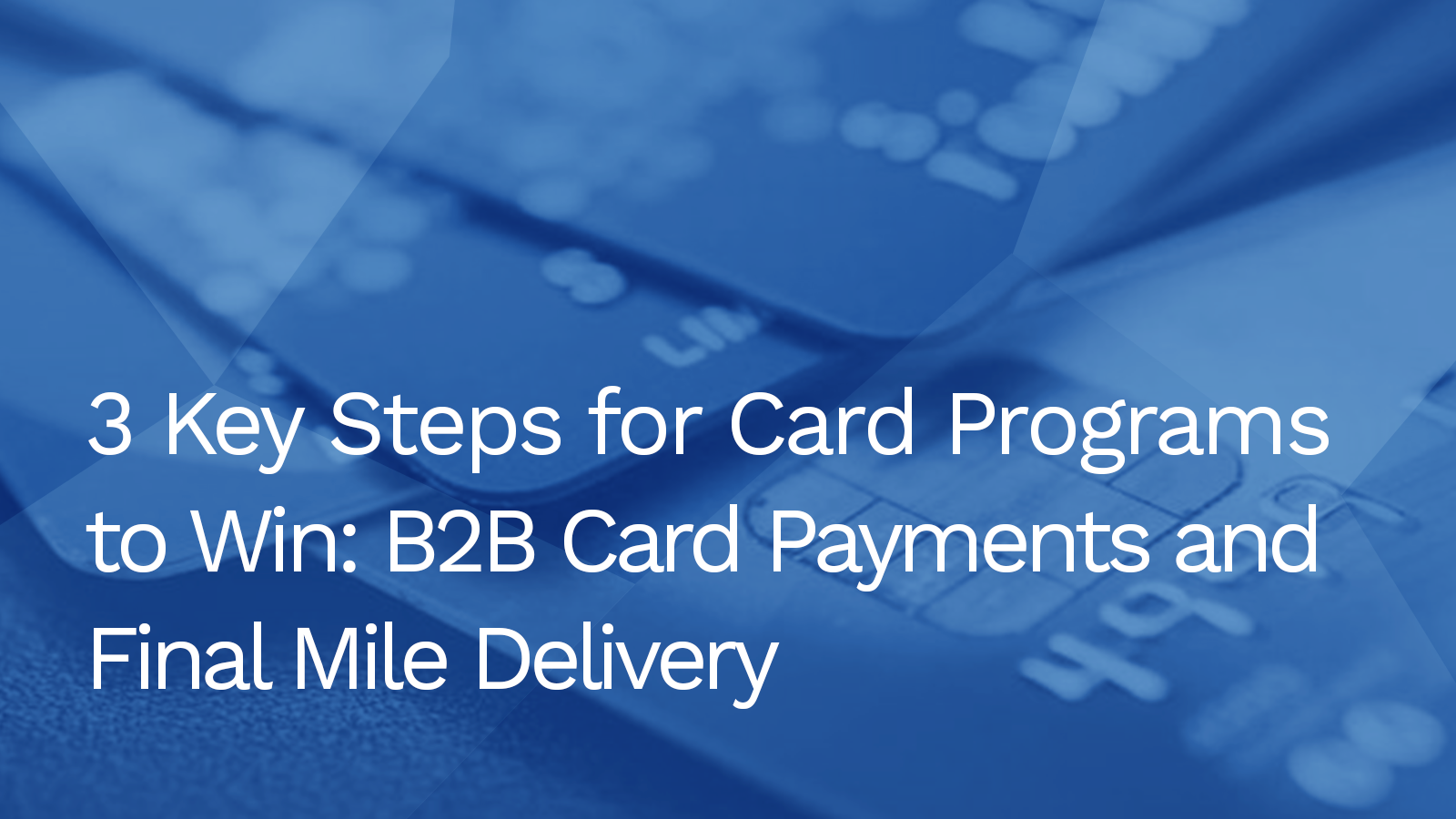
3 Key Steps for Card Programs to Win: B2B Card Payments and Final Mile Delivery
Corporations have been demanding for years that the industry fundamentally transform the way it operates, hence, there has been no shortage of investment and innovation dollars being poured into the B2B payments ecosystem. As a result, card networks and payment processors alike have diligently and tirelessly embarked upon this endeavour.
STEP 1: Acknowledge That Change is Occuring
With any new business, product, or innovative idea - there are 2 fundamental questions to ask. First, do we have, or can we envision, the creative solution to our problems? Second, is the market ready for said ‘innovation’? In the case of the B2B/card payments landscape, the answer to both these questions is an unquestionable, unwavering, emphatic - YES!
Today, card networks offer Virtual Cards, Single Use Accounts, Push to Card, amongst other card payments to capitalize on the markets long-lasting disdain of archaic payment methods. Card payments allow businesses to transact more securely, faster, and with greater visibility into the process - whilst catering to the corporates’ reconciliation requirements. In fact, according to this 2018 study, 91% of B2B merchants reported late payments from their customers and a 2019 Kearney study found that 35% of supplier respondents said that more than 40% of their invoices require manual reconciliation. Thus, it comes as no surprise that virtual card payments alone are projected “to grow to $355 billion by 2022 — up from $136 billion in 2017”.
STEP 2: Prepare to adapt to market drivers
Moreover, and crucially, the market indicates that the adoption of these card payments remains a key priority. According to MasterCard (2018), Thirty-three percent of companies plan to roll out real-time payments innovations in the next three years, and 32 percent plan to introduce changes related to automated payables. Furthermore, according to the same survey, “more than 30 percent of respondents expect their check usage to decrease, while ePayables with virtual cards are expected to see the greatest leaps at 37 percent.”
Thus, the ingenuity of the card networks coupled with the market’s eagerness seems a job well done. Both critical questions were asked, and both were answered. So what else needs to be true for card networks to “win”, as the title of this article suggests? Well, consider a third question - How can one accelerate the adoption of said innovation?
Step 3: Accelerate adoption through ERPs
The desire for simplified, automated, and optimized experiences among commercial clients combined with market innovations to accelerate shifts in this space are changing the way card networks should think about their Final Mile Delivery - and herein lies the answer to our third question. The only delivery channel that can embed the card networks into the corporates’ final mile accounting, whilst concurrently providing a platform to build a seamless UX/UI journey, is the corporates’ Accounting System/ERP.
Consider the following scenario. A business is handling all of their AP obligations through ACH and Check payments. They wish to streamline their AP processes to save time, money and reduce the frequency of errors - hence, they explore the market and find two potential solutions. One, opt to use a fintech/payment processor/bank that offers them the ability to simplify their ACH/Check payments and payment file transmission to their bank. Two, adopt a series of innovative new card payment rails to truly benefit from real-time payments, rich data exchange, and secure payments - but go through a major process overhaul and onboarding experience. The latter, seemingly daunting proposition, results in the business option for the former option. Nonetheless, high fives are exchanged, payment processes are modernized and everyone still ‘wins’ - correct? Not quite. Not if you’re the card network.
If B2B card payments are the future, slowly but surely cannibalizing ACH and Check volume, then card networks must devote their time and effort into simplifying the merchant/supplier onboarding and user experience within the systems through which their clients manage their B2B payments. Businesses, like individuals, are adverse to change for a multitude of reasons, especially when that change applies to a long-held practice. In the case of B2B payments behaviour, supplier acceptance and ease of implementation are 2 critical aspects to consider.
Thus, for card networks to truly ‘win’, B2B card payment offerings alone won’t suffice. Rather, B2B card payments must be delivered as an entire seamless experience - from onboarding and adoption through to the actual payment and reconciliation. So what should this “seamless experience” entail? Firstly, card networks must offer a true turnkey solution that allows businesses, regardless of who they bank with, to opt into card services. Second, businesses must be able to onboard their vendors/suppliers as required, depending on the card payment rail and this may entail PCI compliant card credential capture, supplier and buyer email notification systems and identification of accepted payments by supplier - all within the merchant’s ERP.
Of course, as you may have noticed, there are multiple players involved in making this a reality. Card networks must find a way to work with merchants, banks, and ERPs and fundamentally play the role of the architect. In doing so, every dollar of innovation in the B2B card payment ecosystem will exponentially multiply its ROI potential.
If you would like to learn more about how FISPAN can help, please contact us here.

